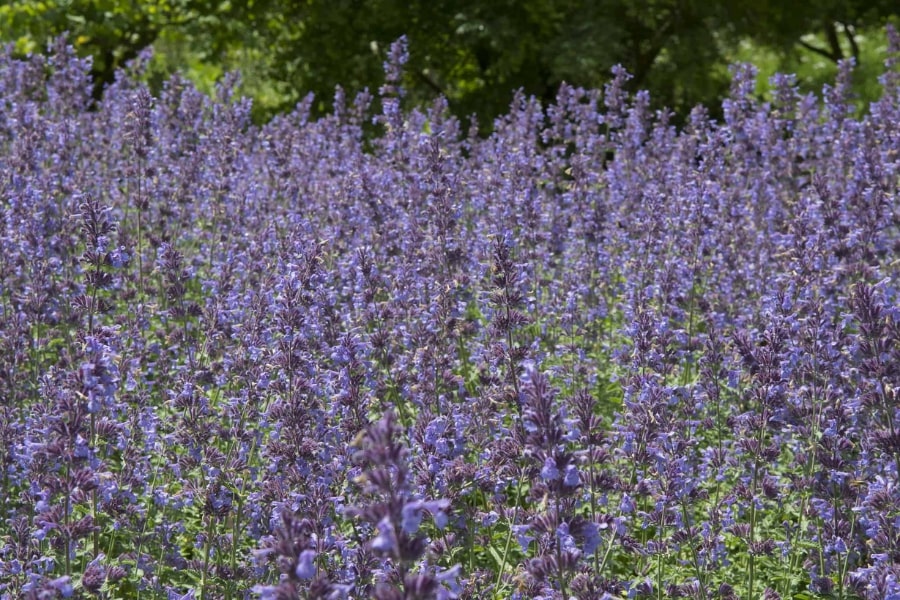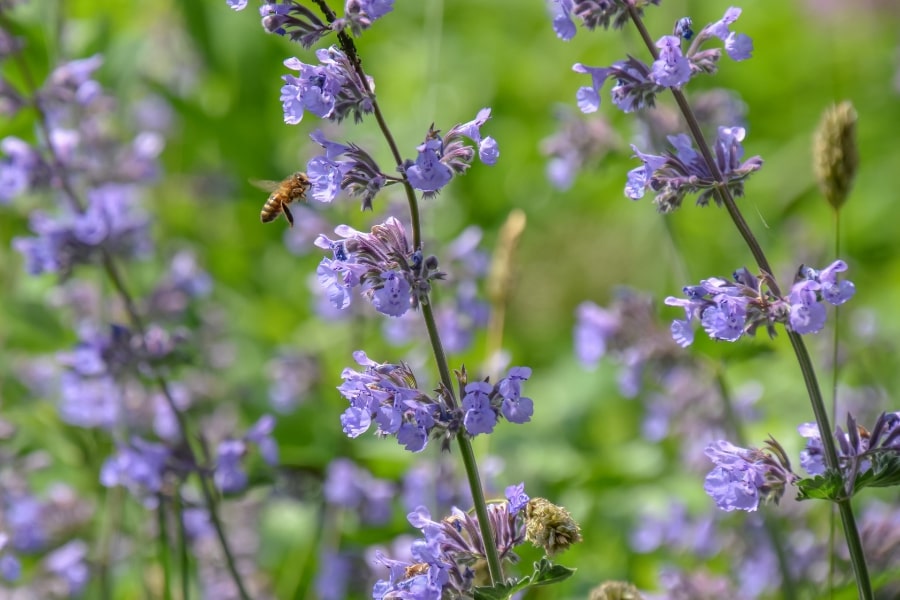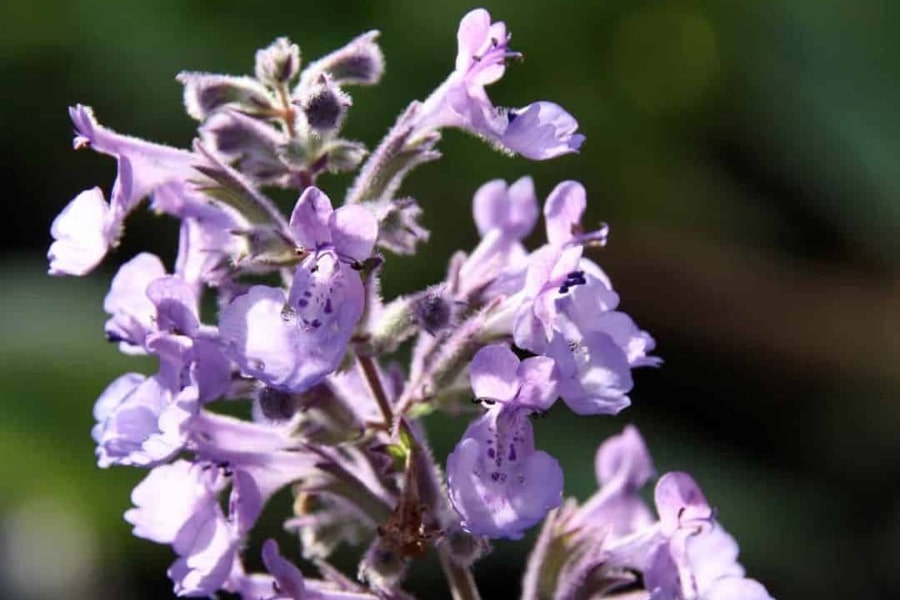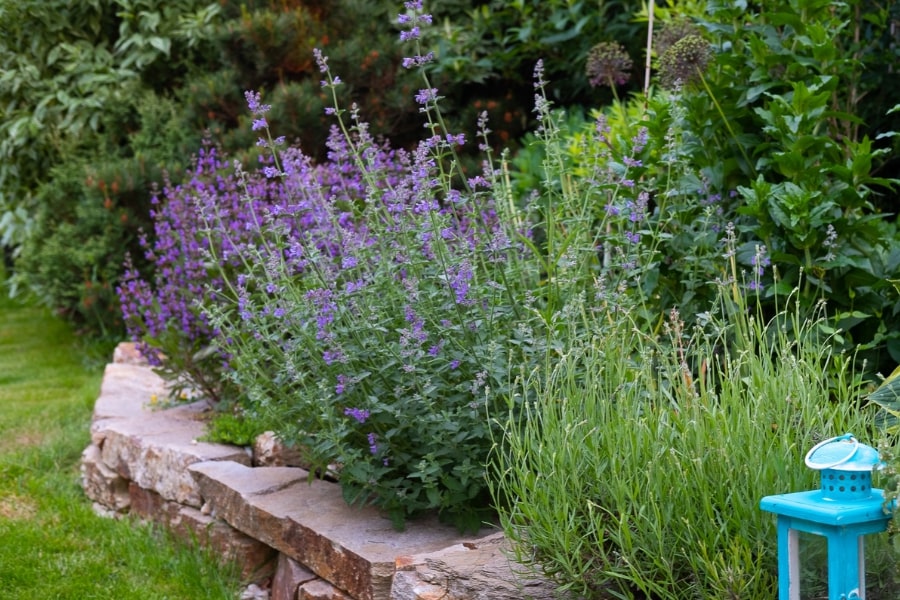Nepeta, commonly known as Catmint, is a herbaceous perennial plant native to Europe, Asia, and Africa, and belongs to the Lamiaceae family. which includes many aromatic plants like mint and lavender. With its beautiful appearance and delightful fragrance, Nepeta has earned a special place in the hearts and gardens of many. Note that Nepeta cataria (Catnip) is considered an herb and is not part of the Nepeta perennial summary.

Our Selection of Nepeta
At Martin Garden Center, by far, we generally have Nepeta 4″ offered all season, with occasional weeks where there is no availability. Also, we occasionally will have 1-gal containers available. In 2025 we will be growing Walkers Low and Junior Walker in 4″ Containers.
Growing and Caring For Nepeta
When planting Nepeta, ensure proper spacing to allow for good air circulation and prevent overcrowding. Providing between 12-18 inches between each plant is recommended; spacing recommendations may vary depending on the specific variety. Nepeta thrives in full sun to light shade, so choose an area that receives at least 6 hours of sunlight daily.
While Nepeta can tolerate various soil types, providing moderately fertile and well-draining soil will help the plant flourish. In its initial phase, water the plant thoroughly to help establish its root system. Once established, Nepeta is relatively drought-tolerant and prefers slightly dry conditions over waterlogged soil. Allow the top inch or so of soil to dry out between waterings, and water deeply but infrequently to encourage the development of deep roots.
Regular pruning and deadheading are important aspects of caring for Nepeta. After the first flush of flowers, usually in late spring to early summer, consider cutting the plant by about one-third of its height. This encourages fresh growth and often leads to a second bloom later in the season. Deadheading, or removing spent flowers, promotes continuous flowering and prevents self-seeding. If you wish to prevent the plant from self-sowing, consider cutting back the entire plant after the second flush of flowers in mid-summer.
Nepeta is generally resistant to pests and diseases, making it a low-maintenance plant. Its aromatic leaves contain compounds that repel many common garden pests, including aphids and certain beetles including the squash beetle. However, be mindful of powdery mildew, a fungal disease that can affect Nepeta in humid or poorly ventilated conditions. To prevent powdery mildew, ensure proper spacing, provide adequate air circulation, and avoid overhead watering. If necessary, you can apply organic copper fungicides as a preventive measure.

Leaves and Flowers
The leaves of Nepeta are a defining feature, known for their aromatic quality and unique texture. These leaves are typically heart-shaped or ovate, with serrated edges, and often have a gray-green to silvery hue. The leaves of Nepeta add an attractive foliage element to garden designs, creating a soft and lush appearance.
The flowers appear in clusters of tubular blossoms ranging from shades of lavender and blue to pink and white, depending on the cultivar. These blooms are arranged on upright stems that rise above the foliage, creating a captivating vertical element. The contrast between the flowers and the surrounding foliage adds depth and dimension to the garden landscape.

Uses in the Garden
Catmint’s low-growing and mounding habit makes it an excellent choice for borders and edging in garden beds. Its dense foliage and profusion of small, aromatic flowers create a neat and appealing border. Planted along pathways or around other perennials, Catmint provides a soft, textured edge, enhancing the overall aesthetics of the garden.
Nepeta also works well as a ground cover, forming a dense mat of foliage that suppresses weeds. Its spreading nature and adaptability to various soil types make it ideal for covering larger areas, slopes, or rocky terrain. Catmint is well-suited for container gardening, thriving in pots, window boxes, or hanging baskets. Its compact and mounding growth habit makes it an attractive and aromatic addition to container arrangements. Placed on patios, balconies, or near entrances, potted Catmint provides a burst of color and fragrance, attracting pollinators like bees and butterflies.

Frequently Asked Questions
Is Nepeta Deer Resistant?
Deer typically avoid plants with strong scents, and Nepeta’s aromatic oils can deter them. However, it’s important to note that deer preferences can vary based on factors such as local food availability, weather conditions, and the specific deer population in the area.
Is Nepeta Invasive?
Nepeta, or catmint, can be considered invasive in certain situations. Some species of Nepeta have the potential to spread rapidly and outcompete native plants, especially in favorable growing conditions. The most commonly encountered invasive species is Nepeta cataria, known as catnip. This plant is known for its vigorous growth and self-seeding tendencies.
Is Nepeta Different From Catnip?
Nepeta is a genus of flowering plants that includes both catmints and catnip. The species Nepeta cataria is catnip. While catmint and catnip are terms that are unfortunately used interchangeably, catnip specifically refers to Nepeta cataria while the general Nepeta term refers to Catmint.
